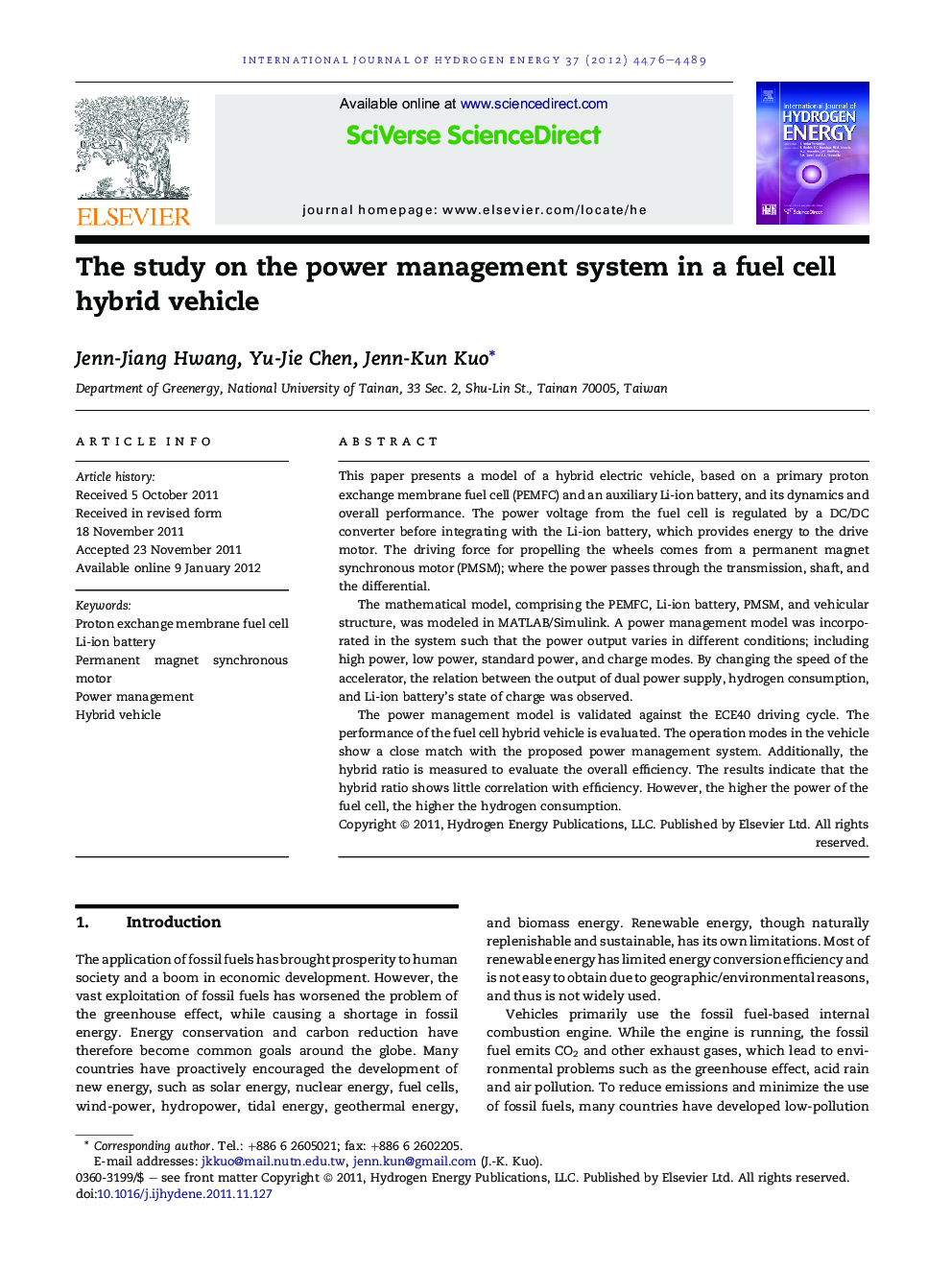| Article ID | Journal | Published Year | Pages | File Type |
|---|---|---|---|---|
| 1275505 | International Journal of Hydrogen Energy | 2012 | 14 Pages |
This paper presents a model of a hybrid electric vehicle, based on a primary proton exchange membrane fuel cell (PEMFC) and an auxiliary Li-ion battery, and its dynamics and overall performance. The power voltage from the fuel cell is regulated by a DC/DC converter before integrating with the Li-ion battery, which provides energy to the drive motor. The driving force for propelling the wheels comes from a permanent magnet synchronous motor (PMSM); where the power passes through the transmission, shaft, and the differential.The mathematical model, comprising the PEMFC, Li-ion battery, PMSM, and vehicular structure, was modeled in MATLAB/Simulink. A power management model was incorporated in the system such that the power output varies in different conditions; including high power, low power, standard power, and charge modes. By changing the speed of the accelerator, the relation between the output of dual power supply, hydrogen consumption, and Li-ion battery’s state of charge was observed.The power management model is validated against the ECE40 driving cycle. The performance of the fuel cell hybrid vehicle is evaluated. The operation modes in the vehicle show a close match with the proposed power management system. Additionally, the hybrid ratio is measured to evaluate the overall efficiency. The results indicate that the hybrid ratio shows little correlation with efficiency. However, the higher the power of the fuel cell, the higher the hydrogen consumption.
► The power voltage from the fuel cell is regulated by a DC/DC converter before integrating with the Li-ion battery. ► The ECE40 acceleration instructions were used in the driving cycle test. ► The driving force for propelling the wheels comes from a permanent magnet synchronous motor (PMSM).
